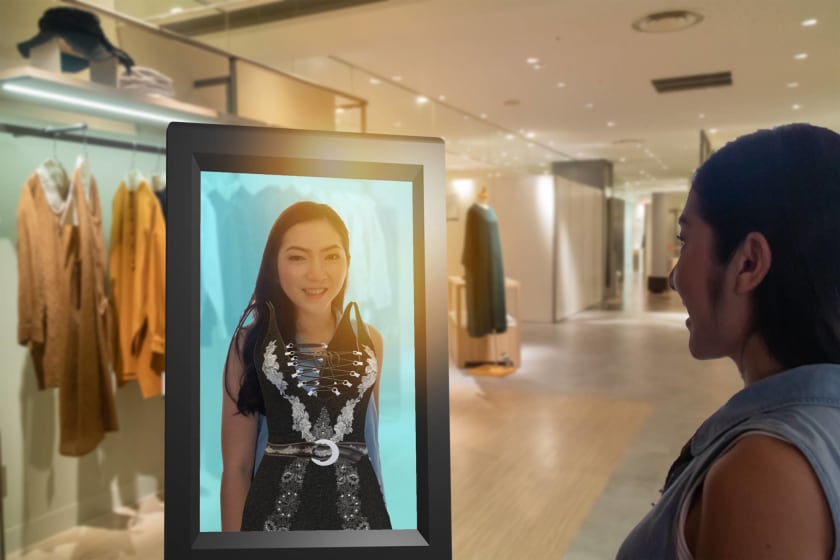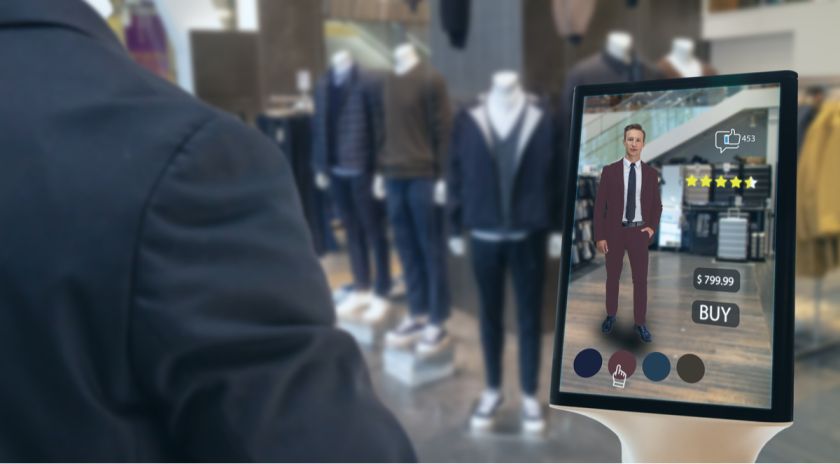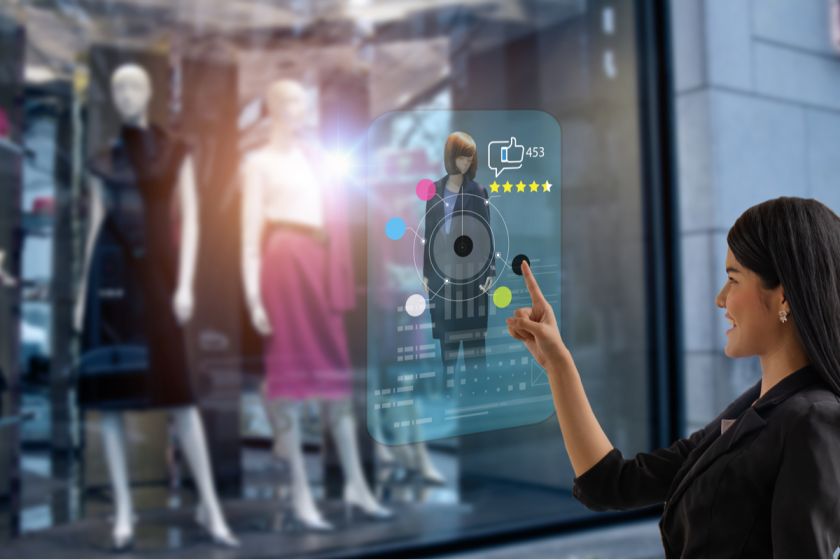VR & Fashion: A Guide for Brands & Manufacturers



Fashion has always been defined as being ephemeral. It is an industry constantly introducing new trends, concepts, and innovations and a new wave of designs for all occasions. Virtual reality's primary goal is to transfer us to recent locations without us having to take a tiny step. With new technologies and changing customer trends and wants, the business is evolving and shifting gears.
With the fast advancement of technology, conventional shopping habits and client attitudes regarding purchases are shifting. Customers are no longer loyal to brands, and novelties are becoming "need to" in today's world, as gamification of items encourages the excitement and pleasure of trying something new.
The Shift in Fashion Technology
Fashion development, particularly in the premium segment, has exploded in the last decade. There are two reasons for this:
- The need for improved consumer experiences is rising.
- As a result of the urgency created by the ecosystem, innovations in sustainability have emerged.
Virtual try-on, virtual windows in which you can "put on" garments and enjoy your new looks, and trips to fashion shows are just a few of the applications for augmented reality fashion and VR fashion business. According to the Google Consumer Survey 2019, 66 per cent of customers are interested in utilizing augmented reality for fashion buying, while Shopify tweeted that product interactions with AR content had a 94 percent greater conversion rate than items without AR.
AR and VR are improving the lives of clients by giving a range of unique prospects such as a virtual trial space, try before you purchase, try it and buy it, try without having taken off, or see my fit - all of which are game-changers in terms of saving customers' process and giving a plethora of options to try on with ease.
What is VR?
Virtual Reality (VR) is a computer-generated interface that simulates the physical world with virtual items. Users experience this virtual environment using VR headsets for helmets.
With virtual stores, augmented reality fashion is enhancing the internet purchasing experience. Kohl's AR with Snapchat and Levis' use of Squad is strengthening businesses' relationships with Millennials and Gen Z. Customers use the Selfie Lens to experience Kohl's Virtual Closet by seeing themselves in Levis ladies’ trucker coats.
Supermodel and fashion designer Sabinna Rachimova debuted her mixed reality programme in London in 2017. In addition to the collection's display, the company encouraged customers to use the Microsoft Hololens devices to see and combine clothing. With simple hand motions, the app allowed users to connect and interchange pieces of clothing to create unique costumes from the Sabinna Rachimova line.
In terms of business, virtual reality can make the fashion industry more accessible to its producers. Traditional fashion shows, trade exhibitions, and other forms of exposure for new businesses are generally hosted in the United States and Europe, and attendance costs a lot of money. On the other hand, emerging virtual technologies can now decrease the entry hurdle for new talent from underrepresented places, making the fashion business far more accessible.
Virtual reality fashion show streaming
Virtual reality was an excellent option for individuals who could not attend the fashion show due to unforeseen circumstances. Brands capture live concerts in 360 degrees and transform them into apps that can be seen with a virtual reality headset. Thousands of people would experience the collections as if they were sitting in the front row.
Several companies have already used streaming possibilities to broaden their consumer base. In 2016, for instance, Balenciaga released a free app that could be used with a smartphone and a Google Cardboard VR viewer. Anybody who installed the application and bought this cheap VR equipment could see a live Balenciaga show for a meagre cost.
Examples of VR Fashion

Retailers utilize augmented reality fashion to allow consumers to virtually project furnishings into their rooms, allowing them to determine whether an object is a proper size and design for their area.
- In its physical stores, Nike employs augmented reality fashion and AR fashion techniques. Customers may scan things like shoes or apparel for information, or they can enter a virtual reality environment to experience the many phases in Nike's distribution chain to understand better how and where products are manufactured.
- FaceCake has developed an Infinite Virtual Closet that allows users to design and build a fantasy closet filled with idealistic clothing and jewellery pieces, then try things on digitally. The AI-powered shopping portal also provides curated style recommendations to customers. Imagine getting to try on jewellery online and then seeing them falling from the lobes.
- Even during the pandemic, Apple used AR fashion technology to bring their real retail locations home and highlight their products. Shoppers may utilize AR Quick Look to view what new iPhone or iMac designs look like in their environment or their hands.
- Asos now offers augmented reality fashion models on their website that you can dress up using augmented reality to see how different items appear on different body shapes. Humans will most certainly have our very own characters in the future, allowing us to have our physique digitized and try out on our characters in the virtual environment.
- In conjunction with Facebook, L'Oreal now provides augmented reality-powered cosmetics try-on experiences. Consumers may try out Maybelline, L'Oréal Paris, Lancôme, Giorgio Armani, Yves Saint Laurent, and Urban Decay.
Advantages of virtual reality for brands
- Cost-cutting
Simultaneously, when VR fashion shows or try-one are presented in physical stores, the company may save money by generating virtual experiences rather than actual ones. Within a medium-sized business, virtual reality apps may build entirely new worlds while displaying collections that are physically far away. Shoppers attending AR fashion shows may then purchase goods they want online or immediately from the application.
- Ease of Design
VR fashion design has become more prevalent in the fashion business due to digitalisation, from giant corporations to freelance designers. Brands and designers who use 3D and virtual samples in their creative process can now see and share their final goods more simply.
Sketching an original concept and establishing technical requirements to aid both the artist and the manufacturer all through the garment-making process are all part of fashion design.
- Help in Production
After the clothing has been developed and the prototype has been produced, it is time to make it. The first step is to discover fine textiles and the appropriate producers. The augmented reality fashion Cameo v7 seems to be an apparel design development system for experienced pattern makers that helps you bring your ideas to life. Designers may plan, modify, and establish technical phrases for patterning, whether they're creating one-of-a-kind masterpieces or designing for mass standard-size outputs. It is still necessary to know how to start a pattern on parchment to utilize the programme. It doesn't take the place of such abilities, but it does make the whole thing more accessible.
- The Easy Logistics
Before visiting the store, people may try new clothing, shoes, and even hair colour and cosmetics, straddling the line between physical and online. Retailers like Topshop, Converse, and Sephora have previously embraced AR fashion in their ‘Try Before You Buy’ experiences. Companies like Zara have recently begun to use augmented reality to improve in-store interaction. Customers may use their smartphones and image processing technologies to see digital models wearing goods from the racks for a better customer experience with VR Fashion.
- Collecting information
Furthermore, AR fashion apps are a fantastic source of valuable consumer data and analytics. The brand can discover components and processes that interest the consumer and those that go undetected within a VR experience. Virtual reality enables improved design, structure, workflows, and several other elements that drive user reach and engagement to be made. Furthermore, compared to tracking offline establishments, this complete analytics is provided at a reduced cost.
Future of VR in Fashion

The fashion business has undergone a seismic upheaval as a result of the coronavirus outbreak. With the fast advancement of technology, conventional shopping habits and client attitudes regarding purchases are shifting. Although virtual reality is still in its early phases, seeing the future of virtual reality in fashion is not difficult. Many comment threads, including The International Data Corporation (IDC), predict tremendous development at the end of virtual reality.
Fashion businesses are attempting to make purchasing more pleasant and Instagram-worthy by utilizing Augmented Reality and Virtual Reality. Companies expect improved revenue and brand loyalty as a result of this enhanced involvement. AR, which creates an augmented reality atmosphere, and VR, which creates a virtual reality environment, help clients save time by cutting down the decision process.
Virtual simulation of retail surroundings is another field. The ultimate objective, though, is to make VR/AR accessible to the general public. According to new research, compared to traditional 2D VR, interaction and visual-spatial signals in a 3D VR environment dramatically boost perceived knowledge and fun.
The virtual reality application must be genuinely top-notch to offer a smooth, spectacular experience of total immersion. When it comes to fashion, it's either the best or nothing since a poor execution might be detrimental to the business. To create a genuine sense of presence and proximity, the application must transmit subtle colour subtleties, sumptuous textiles, and imaginative cosmetics. As a result, expert virtual reality development is essential.
Conclusion
To create a genuinely exceptional product, you'll need cutting-edge methods and software on the one hand and an experienced team with extensive expertise dealing with virtual reality technology, particularly when it comes to integrating fashion and VR. In the realm of fashion, virtual reality has a lot of potentials and is now in the development stage, with a promising start.



















